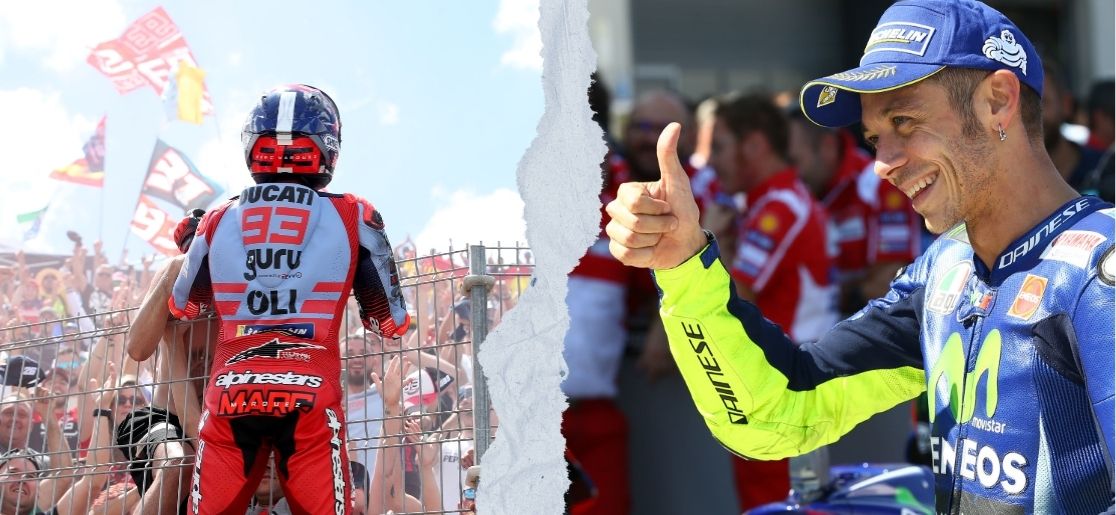As Marc Márquez continues to add to his legacy, one question burns brighter than ever among MotoGP fans: has he finally dethroned Valentino Rossi as the true king of this era of motorcycle racing?
Rossi’s legacy in the newest era of two-wheeled competition is monumental. He boasts seven titles, nearly two decades at the top, and a global fanbase that helped define MotoGP. For years he stood unrivalled, but Márquez’s explosive rise has changed everything. With six MotoGP titles, a riding style that pushed the limits of physics, and a comeback story still unfolding, Márquez has built a legacy that demands comparison.
While Rossi stepped away from the grid at the end of the 2021 season, Márquez continues to chase greatness. So the question remains: Has Márquez already done enough to overtake Rossi in the MotoGP era, or does the Doctor still hold the crown?
In this article, we break down their careers, stats, styles, and cultural impact to explore whether Marc Márquez or Valentino Rossi deserve the crown of king of the MotoGP era.
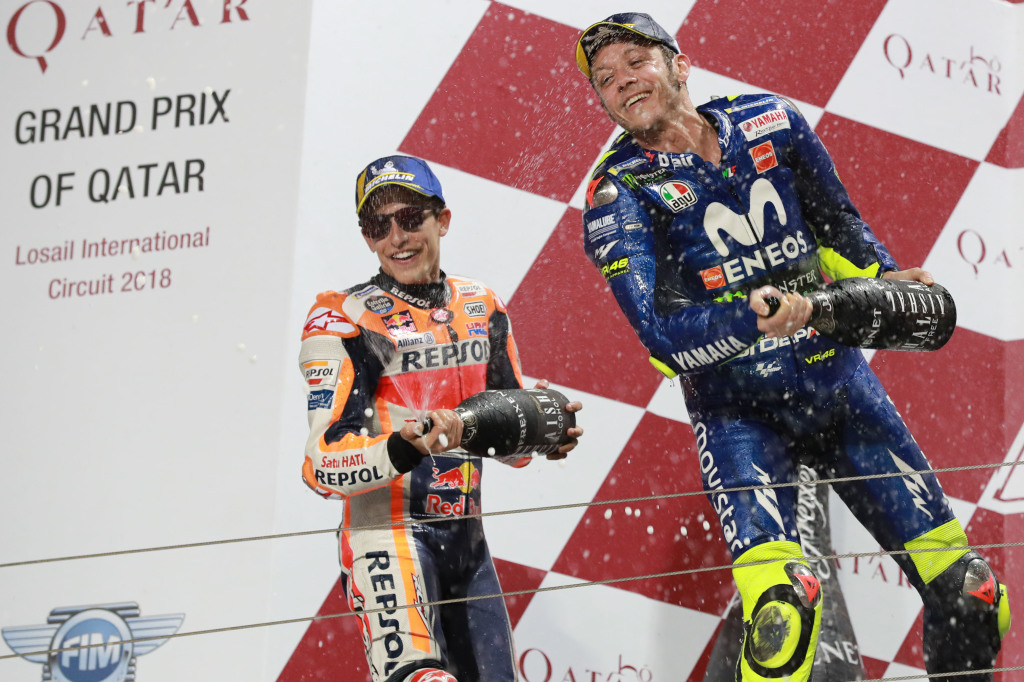
Head-to-Head: Rossi vs Márquez
While both riders boast incredible careers, the way they built their legacies differs significantly. Rossi’s strength lies in longevity, adaptability, and consistency over two decades. Márquez, by contrast, delivered a period of intense domination with one of the highest win rates in modern two-wheeled racing.
Here’s how they compare within the MotoGP era:
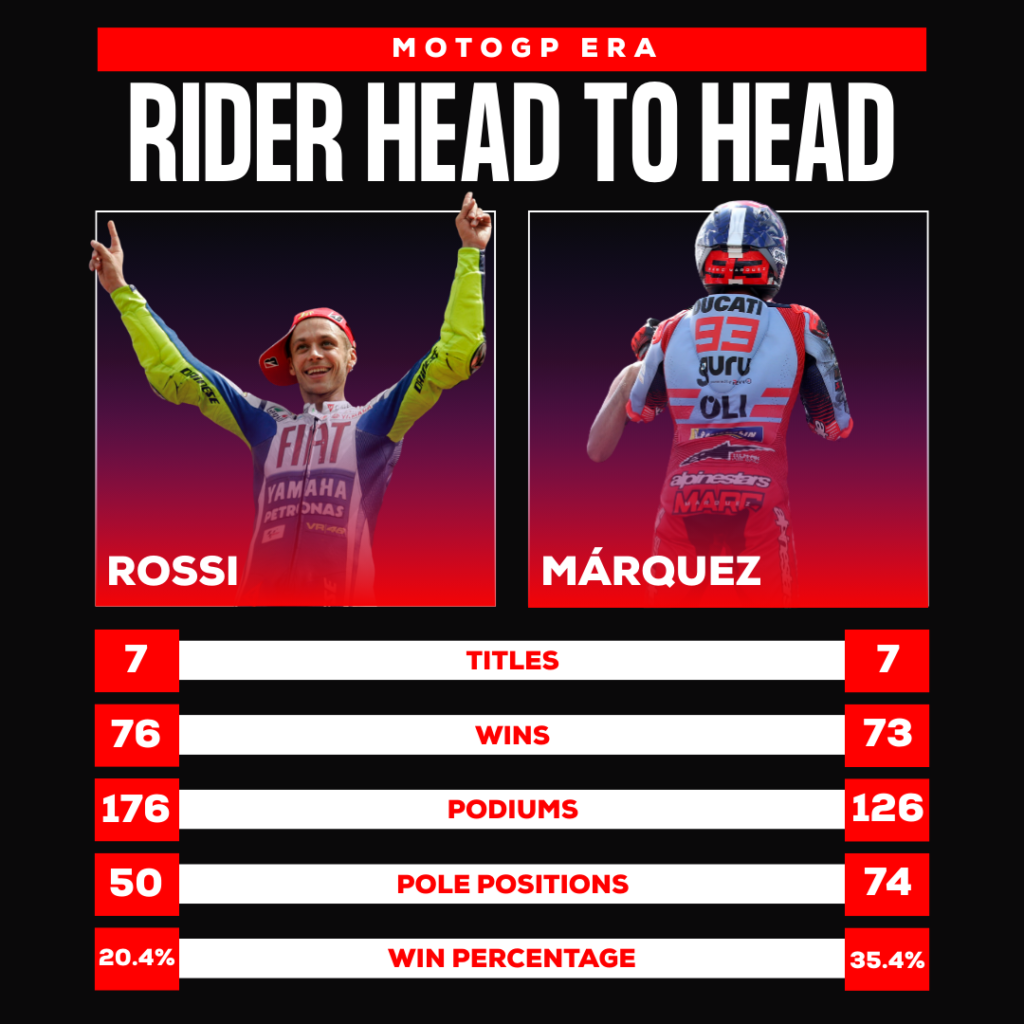
Márquez holds the edge in win rate, pole positions and sheer dominance over short periods, including an incredible 2019 season where he finished first or second in every race but one. Rossi, meanwhile, built his legacy on longevity, adaptability across different generations of machinery, and consistency over a long career.
It’s also worth noting the age gap and era differences. Rossi faced evolving technologies, rule changes, and a longer list of championship-caliber rivals across multiple generations. Márquez’s era has been defined by tighter electronics, stiffer competition across the grid, and shorter windows of dominance.
While the numbers tell one story, their on-track rivalry also tells another. There were a couple of controversial clashes between 2015 and 2018, which added a personal edge to this debate.
Career Highlights
Valentino Rossi
While this article focuses on the greatest rider of the MotoGP era – which began with the sport’s rebrand and technical overhaul in 2002 – it’s impossible to overlook Rossi’s success that bridged both generations of premier-class racing.
Rossi debuted in 125cc at the Malaysian Grand Prix in 1996, won the 250cc title at the Brazilian Grand Prix in 1999, and stepped into the spotlight by winning the final 500cc World Championship in 2001 in the last year before MotoGP’s official transition to the four-stroke era. That win set the stage for what would become a legendary MotoGP career.
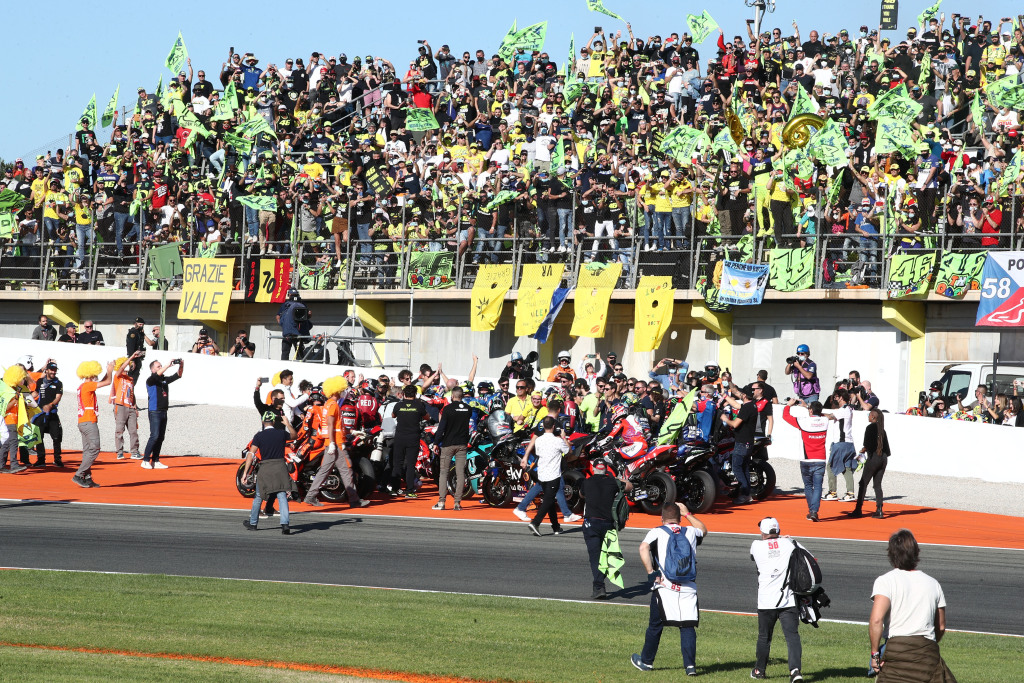
Once the modern era began in 2002, Rossi dominated. He won four consecutive MotoGP titles from 2002 to 2005, along with two more in 2008 and 2009. In total, he claimed seven premier-class titles in the MotoGP era and nine world championships overall.
Across his career, he amassed 76 MotoGP wins and 176 podiums, racing for Honda, Yamaha, and Ducati. The numbers were one thing but Rossi’s personality and love for a rivalry elevated him to a legend of the sport. Many MotoGP fans worldwide began taking an interest because of the Italian.
Marc Márquez
Márquez entered the MotoGP premier class in 2013 with Repsol Honda and immediately made an impact, becoming the youngest ever MotoGP world champion in his rookie season. Over the next several years, he built a reputation for high-risk, high-reward racing that delivered six world titles between 2013 and 2019.
Márquez had a unique riding style and became known for extreme lean angles, often dragging his elbow, and sometimes his shoulder, through corners. This level of commitment gave rise to what became known as the “Márquez lean”, a technique that influenced both rider behaviour and how teams approached their setup.
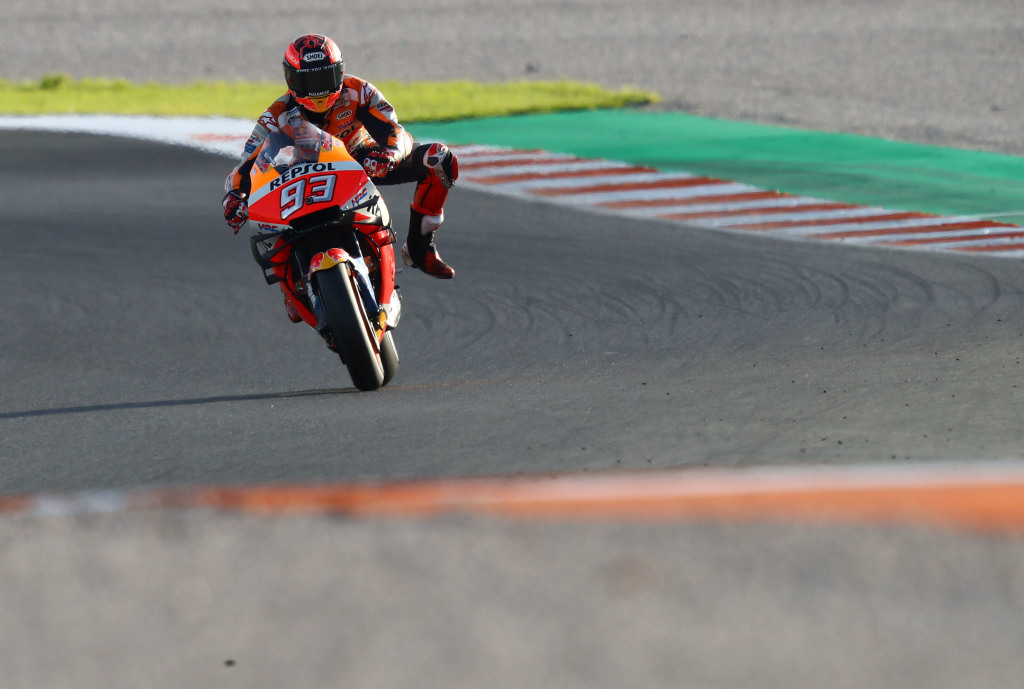
Injuries, particularly a serious arm fracture in 2020, disrupted his momentum and kept him sidelined for much of the following seasons. Despite setbacks, he remained competitive and returned to form with strong performances in subsequent years. His move to Ducati in 2024 marked a new phase in his career, with continued podiums and title contention proving he’s far from finished.
With over 50 wins and 100 podiums, along with a style that helped reshape the modern era of MotoGP, Márquez remains an active and central figure in the the best rider of all time debate, and his story isn’t over yet.
Riding Style
Valentino Rossi
Rossi’s riding was defined by clarity of intent. He relied on sharp race intelligence and consistency, often building pressure on rivals lap by lap rather than forcing the issue early. His strength wasn’t rooted in raw aggression or risk, but in extracting maximum performance with minimal mistakes. This quality helped him stay competitive across a wide range of bikes and rule changes across his time in top tier motorcycle racing.
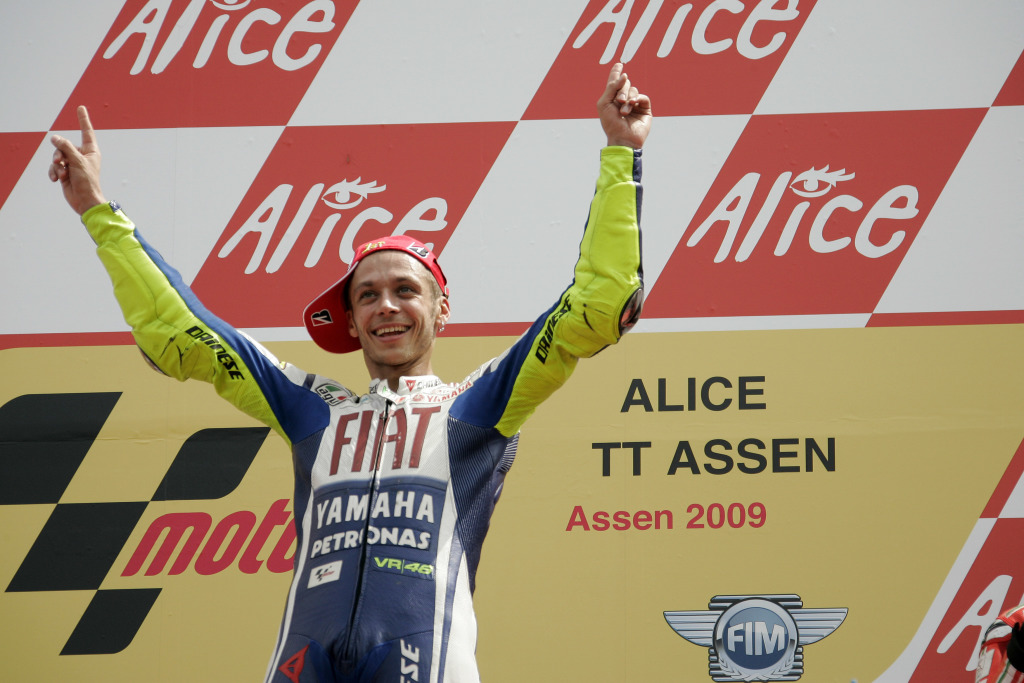
His ability to evolve with the sport played a key role in his influence. As MotoGP shifted into a more technical era, Rossi adjusted his riding and remained a front runner well into his late 30s. Rossi’s complete understanding of his machinery set a benchmark for how to manage a race and inspired multiple generations of riders to blend speed with strategy.
Marc Márquez
Márquez’s approach to riding is defined by control at the edge of traction. His ability to carry speed into corners while managing both ends of the bike on the limit has made him one of the most technically daring riders of the MotoGP era. Rather than relying on traditional lines or consistent rhythm, he often uses sharp, reactive movements to correct slides or recover from near-lowsides mid-corner. Something very few riders can replicate with success.
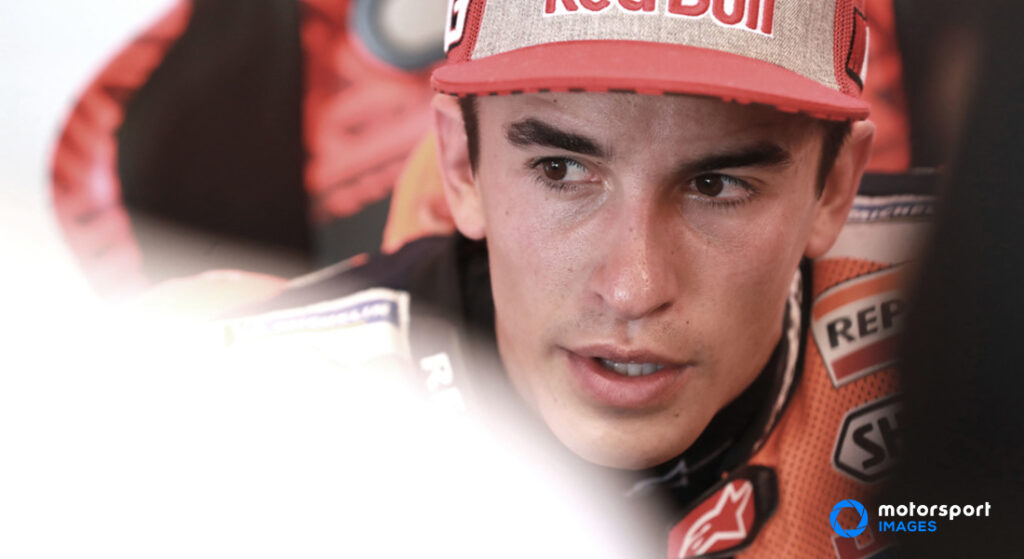
His riding style has had clear ripple effects across the grid. Márquez’s body positioning and technique led to changes in how bikes are set up, particularly around ergonomics and front-end feel. Several younger riders have adapted their approach to mirror elements of his style, though few have matched his ability to control a bike so far beyond the conventional limit. While not always smooth, Márquez’s riding has reshaped how competitiveness is measured in modern MotoGP.
Legacy & Cultural Impact
Valentino Rossi
Rossi played a major role in raising MotoGP’s global profile during the 2000s and early 2010s. His iconic personal branding and post-race behaviour brought mainstream attention to the sport at a time when it was still growing internationally. Rossi helped transform riders from athletes into marketable personalities, paving the way for modern fan engagement in MotoGP. This has benefitted the sport hugely over the years.
His appeal extended well beyond results. Seas of yellow would be seen at every Grand Prix weekend, in turn boosting attendances right across the calendar. Even after his final title in 2009, his popularity remained unmatched. Rossi’s VR46 Academy has also helped develop the next generation of Italian riders, including the likes of Francesco Bagnaia and Franco Morbidelli. His contribution to the sport’s popularity and depth of talent remains one of his most enduring achievements.
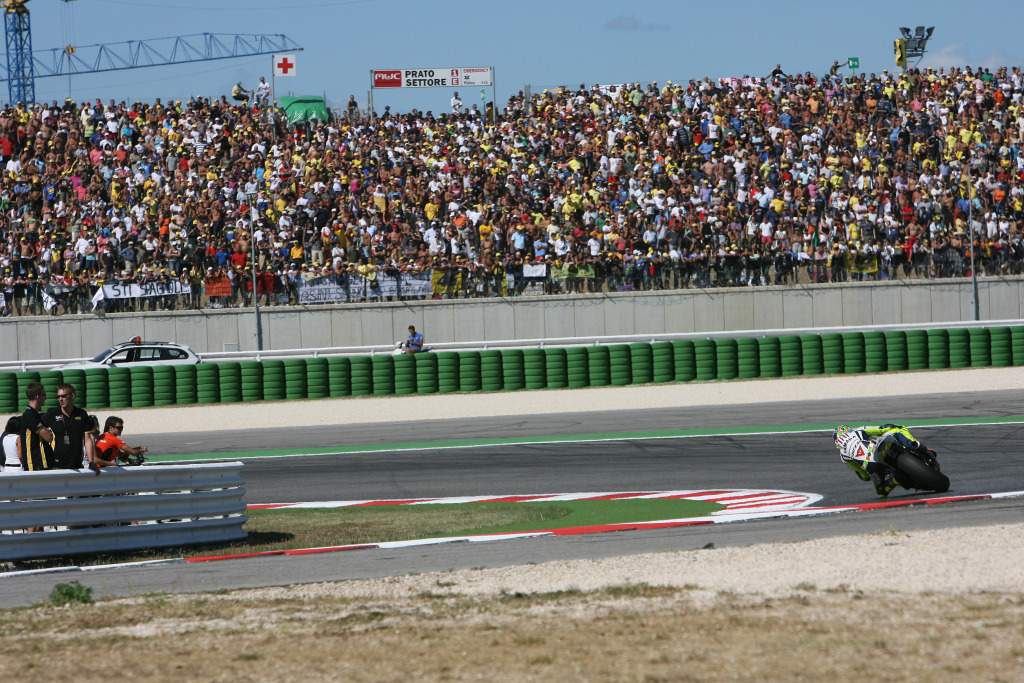
Marc Márquez
Márquez’s impact on MotoGP has been shaped by his unique and aggressive riding style. His success prompted changes across the paddock, from how bikes were designed to how riders trained and approached risk. As a result of his successes, teams began focusing more on rider mobility, bike balance, and electronics that could support a more extreme riding approach.
Although Márquez has never focused heavily on public persona or branding in the same way that Rossi did, he’s built a strong and loyal following based on what he does on the track. His duels with Jorge Lorenzo, Andrea Dovizioso, and especially Rossi helped to maintain interest in MotoGP throughout the 2010s. Even during long injury layoffs, his return efforts drew mass coverage and demonstrated his continuing relevance. As he remains active and competitive, his long-term influence on the sport’s technical evolution is still playing out.
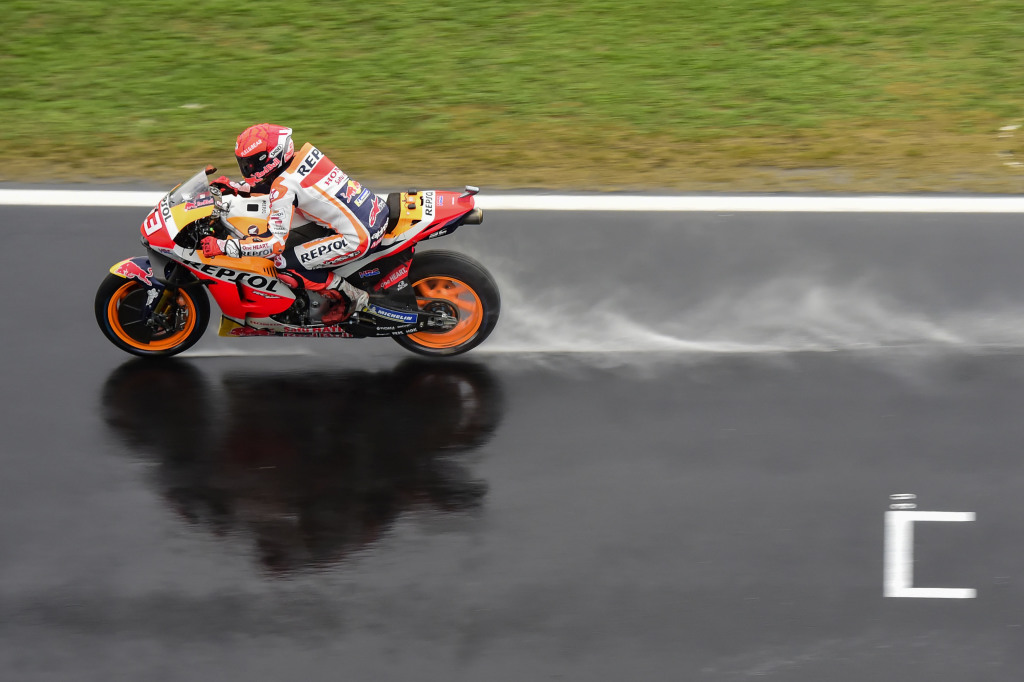
Who is the king of the MotoGP era?
Determining the greatest of all time in MotoGP goes way beyond statistics. Whether you make the point for Marc Márquez or Valentino Rossi, both have shaped the sport in their own way.
Rossi thrived through constant change. From two-strokes to four-strokes, from Michelin to Bridgestone to unified tyres, he adjusted and stayed competitive through it all. His strength was consistency under pressure and the ability to evolve year after year. He raced the best of each generation and remained a central figure through them all. Few riders have matched that kind of sustained relevance in any form of motorsport.
Márquez brought a different kind of intensity. His dominance from 2013 onward forced every team and rider to find new limits. He could win from the front or recover from mistakes others couldn’t survive. His racing was defined by instinct, risk, and control at the very edge of physics, pushing MotoGP into an even more demanding era. Despite serious injuries, his ability to return and fight at the front highlights a resilience that sets him apart.
So, who takes the crown? Marc Márquez or Valentino Rossi? If greatness is defined by technical mastery, sheer pace, and raising the performance ceiling of the sport, Márquez leads the way. If the measure is broader, spanning longevity, adaptability, and influence that reshaped how people see MotoGP, Rossi takes the crown.
Verdict: Márquez is the greatest rider of the MotoGP era in terms of performance and dominance, but Rossi remains the most iconic figure in the sport’s modern history. The debate isn’t settled and maybe it never will be. But it’s clear that MotoGP has been shaped most by these two riders, each unmatched in their own way.
